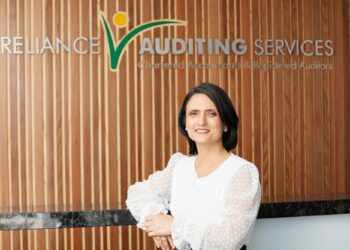Practical Systems Super chief executive Bob Locke said that, while SMSF professionals would be aware that exceeding the general limits or caps for superannuation contributions incurs significant financial consequences, it is important to remember that there are some specific measures which allow for contributions beyond the usual maximum amounts permitted.
Mr Locke said these measures present some useful planning opportunities for SMSF clients.
Five-year catch-up contributions
One example is the five-year catch-up contributions, which allow an individual to carry forward any unused portion of their concessional contribution cap over a five-year rolling basis. Members will be able to start using any unused cap space from next financial year.
Mr Locke gave an example of Fred, who is employed on a salary of $86,000 per annum and has had employer contributions of $8,170 made each year from 1 July 2018.
“His current total superannuation balance is $250,000. Towards the end of the 2022–23 financial year, Fred sells an investment property and makes a gross capital gain of $200,000. His accountant advises that he will be up for additional tax of around $39,300,” he explained.
“Fred could consider a concessional contribution to his superannuation fund of up to $84,150, which is the amount of his unused concessional cap since 1 July 2018.”
This would reduce the additional personal tax to $6,000, and after allowing for the 15 per cent contributions tax on the $84,150 into the fund, Fred’s net saving would be around $20,600, he explained.
Contribution reserving strategies
Another strategy, he said, would be to claim two years of concessional contributions using a contribution reserving strategy.
“[For example], Katie is self-employed and for the year ended 30 June 2019 estimates her net business income at $180,000. She has planned for some time to take a year off and travel, and has arranged this to commence in the following year and so is unlikely to have any significant income for that year,” he said.
“Katie currently has $750,000 in her SMSF and is about to sell an investment property which is expected to realise a gross capital gain of $100,000. The additional net capital gain will attract tax of around $23,500.”
Mr Locke said Katie could decide to contribute two amounts of $25,000 to her superannuation fund; one in December 2018 and one in mid-June 2019.
The effect of this, he said, would be to reduce Katie’s personal tax by $23,500, and after allowing for the 15 per cent contributions tax in the SMSF, her net saving is $16,000, which is double the amount saved if she simply contributed the $25,000 cap amount.
However, there are several essential elements for this strategy to be effective, he said.
“The second contribution of $25,000 has to be made in June as the SMSF will have to reserve this amount for a maximum period of 28 days,” he explained.
“When the contribution is received in June, it is allocated to a contributions reserve and then allocated to Katie’s account in the fund in early July.”
Katie will also need to complete a “Request to adjust concessional contributions” form to ensure that the ATO does not treat the additional $25,000 as an excess concessional contribution, he said.
CGT contributions for small business
SMSF clients who have sold a small business may also want to consider using the proceeds from the sale of the business to make a contribution and use it with other measures such as home downsizer contributions.
“[For example], Rose took over the family farm 25 years ago and, having reached the age of 66, decides to sell up and move to the coast to be near her family. The farm is sold for $2.5 million and after taking advice, Rose decides to move the maximum amount possible into a new SMSF. Settlement of the farm is expected in May and she would like all the financial arrangements to be in place by 30 June,” he said.
“Rose’s goal of achieving the maximum possible superannuation balance in the specified time frame could be achieved using a combination of available strategies.”
She could make a non-concessional contribution of $300,000 utilising the three-year bring-forward option, make a CGT contribution up to the maximum allowed for 2018–19 of $1.48 million and make a downsizer contribution of $300,000, he explained.
In addition, she could make a concessional contribution of $25,000 or even make a second concessional contribution by using a contribution reserving strategy.


